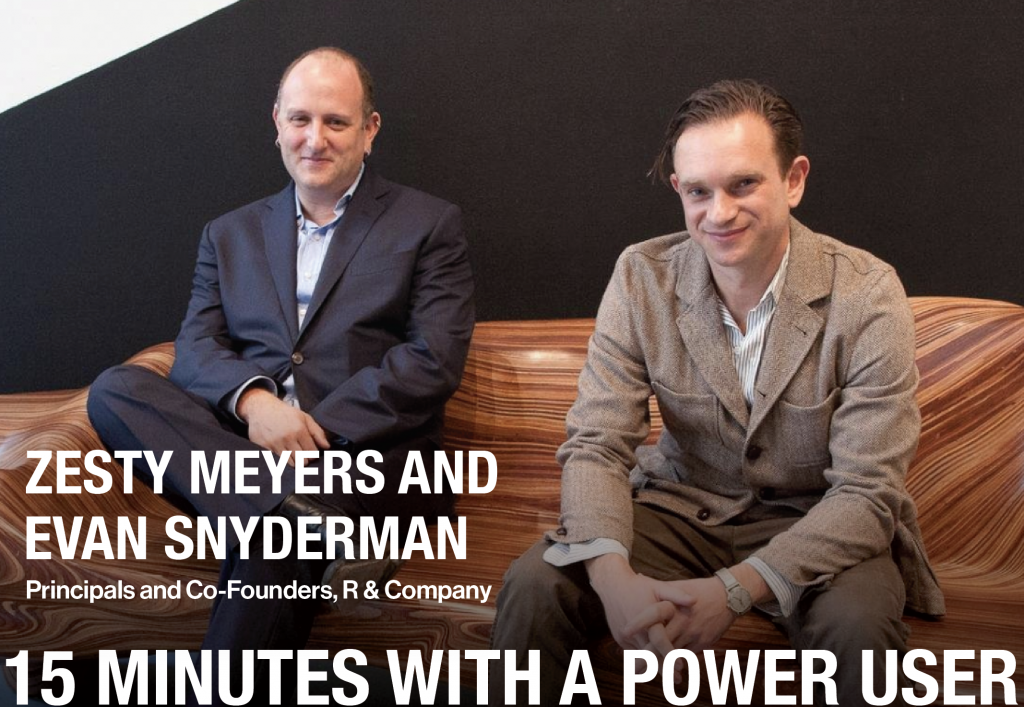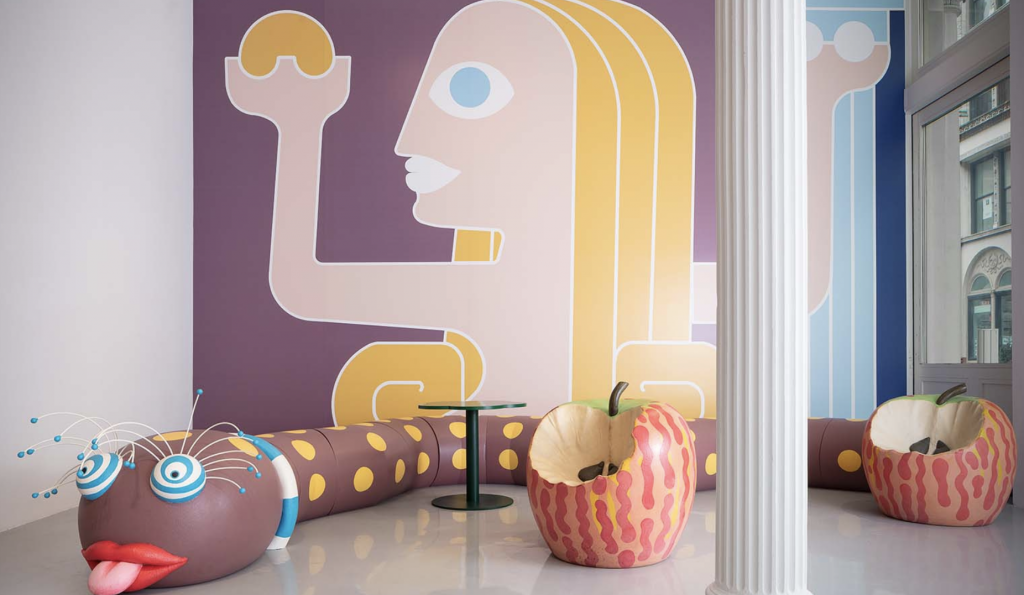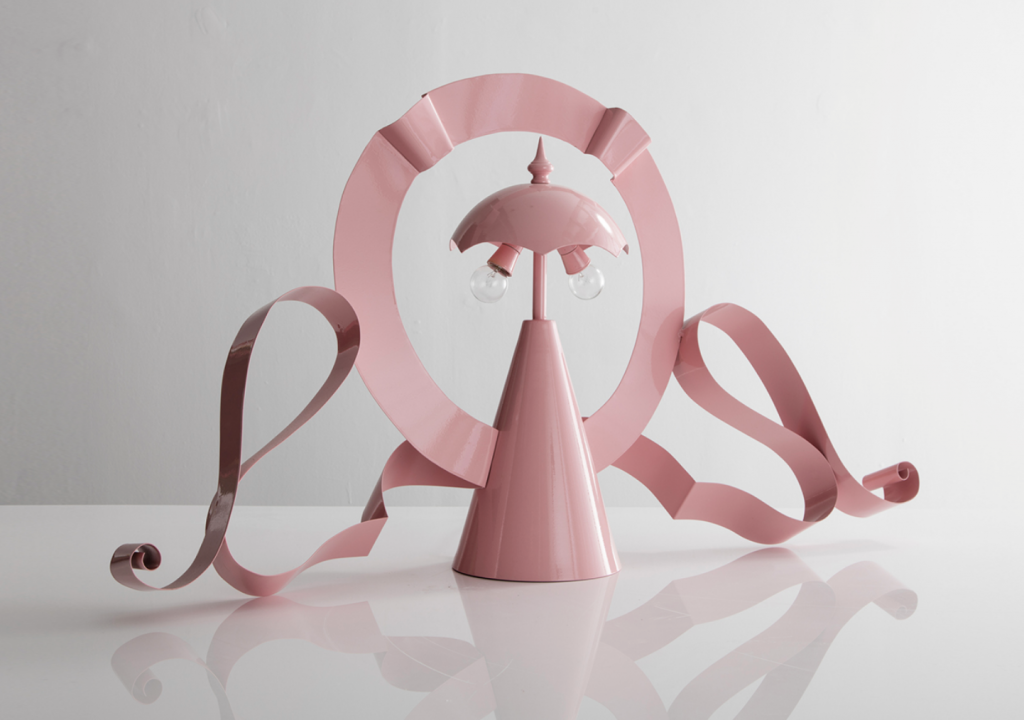Art World
15 Minutes With a Price Database Power User: Design Dealers Zesty Meyers and Evan Snyderman on the Future of the Market
The cofounders of the R & Company design gallery reflect on their two decades in business.

The cofounders of the R & Company design gallery reflect on their two decades in business.

Artnet Price Database Team

There is only one tool trusted by art-world insiders to buy, sell, and research art: the Artnet Price Database. Its users across industries—from auction houses to museums, galleries and government institutions—represent the art world’s most important players. We’re taking 15 minutes to chat with some of the Artnet Price Database’s power users to get their take on the current state of the market and how they’re keeping up with the latest trends.
Since founding their gallery in 1997, R & Company principals Zesty Meyers and Evan Snyderman have watched the design market transform from a niche corner of the art world into a full-blown global trade.
Over two-plus decades in business, the pair’s work has contributed to the expansion and recognition of design as a major collecting category in its own right. Besides championing the work of major 20th-century Brazilian designers and bringing their works into the international spotlight, they also represent contemporary design stars like Jeff Zimmerman, Katie Stout, and Johnny Swing.
We caught up with the power duo to hear about the changes they’ve seen in the design market, their favorite periods in design history, and what they look for in contemporary designers.
How has the design market changed since you started the business over two decades ago?
Zesty Meyers: When we started, there was no real value or growing value to the market. The market just started to explode, and then the global world wanted what they had never had. The marketplace has gone up and up. The growth is incredible. We dreamed of being able to do exhibitions and to print books. We wanted the museums to collect and borrow from us, and this is all happening now.
Evan Snyderman: The biggest shift is that design has become more collectible, and is ending up in people’s homes, not just for the sole purpose of decoration, but as additions to their collection. The changes really became evident with the introduction of Design Miami/Basel in 2004. Opening alongside Art Basel Miami Beach, collectors saw design presented on a different level, for many as the first time.
What genres of design does R & Company specialize in?
ES: We are very specific in what we represent as a gallery, and prefer to develop new markets for work as opposed to following a trend or an established genre. We’re one of the few galleries specializing in both historic and contemporary. With historical design, we look for new discoveries or overlooked aspects of works from specific areas in the design world that we felt were important, but had not been given enough attention. We have always been driven by curiosity. This has led us to very interesting discoveries along the way, such as Brazilian Design, Italian Radical Design, designers such as Greta Grossman, Wendell Castle, Verner Panton, and others who we have championed for years.
When it comes to our contemporary program, it is always about the work and the person behind it. We like to tell stories, and we like to work with designers who are not afraid to push boundaries.

Installation view of “Mela Morsicata (Bitten Apple) – Studio 65: Irony & Transgression,” a solo exhibition of pioneering Italian Radical Design group Studio65 at R & Company.
You’ve been the pre-eminent champions of Brazilian design, especially the work of Sérgio Rodrigues. What attracts you to this genre?
ZM: Brazil is the last great discovery of mid-20th-century design that will be discovered in the world. There was a freedom with what the designers like Sérgio Rodrigues, Joaquim Tenreiro and José Zanine Caldas were able to do while working in Rio De Janeiro at the same time. They didn’t copy each other, and they all became masters and grew with their own individual styles.
ES: When we first traveled to Brazil about 16 years ago, no one had ever heard of Rodrigues, Tenreiro, or Zanine. It felt like an incredible discovery had been made, maybe the biggest we would ever be a part of. Today, these designers are recognized around the world for their contributions to the modern design canon, and we feel that with that we have achieved something bigger than ourselves.
What do you look for in the work of contemporary designers?
ZM: We want the people that we represent to be different from one another. We are curious about what and how people think about what design is. We do not want two of the same. The world is an interesting place, and we think about how we can bring the global world of design to our global community.
ES: We have no set of rules when it comes to our contemporary designers. In fact, maybe we look for designers who like to break the rules. We look for diversity of practice and craft. Is there a message, a unique perspective, and a story to tell? I do tend to obsess over how things are made, and love the process and a sense of humor.
What overlap do your clients have with other collecting categories, such as contemporary art?
ZM: Most of our clients collect art. One of the great things that we are able to do is help make our clients’ homes a complete picture of how to live with their art collections.
ES: The truth is, the work we represent in our contemporary program crosses over into visual art more often than not. Designers such as the Haas Brothers, Katie Stout, and Serban Ionescu are also exhibiting in contemporary art galleries as well as design galleries. This is a trend we see continuing to grow.

Lapo Binazzi, MGM Lamp. Shown as part of R & Company’s virtual exhibition, “Failed Seriousness: Lapo Binazzi and Serban Ionescu.“
What is your favorite design period?
ZM: The late ’60s and early ’70s, like the work of Verner Panton.
ES: 1960s and early ‘70s Italian Radical design. Radical design brought together all art disciplines without hierarchy. Architecture, design, painting, sculpture, performance, music, dance, and fashion came together to form a movement that set out to change the world’s social and political environment.
Do you have any predictions for the modern and contemporary design market over the next five years?
ZM: The market will keep growing as the world is trying to define itself in the age of the billionaire. We will help set the taste for the century. This has always been the job of the artisans. People are going to want things that are unique and handmade.
ES: I see the worlds between art and design continuing to converge. Important historical design will make its way further into the art market as more traditional art galleries begin to represent design as part of their program.
What else do you collect besides furniture and objects?
ZM: Striped shirts and socks from Paul Smith.
ES: I have collected so many things over the years, and I suppose in part this is why I became a dealer in the first place. I’ve collected antique toys since I was a boy. I am also obsessed with vintage cars and if I could afford to, I would own too many for my own good.
What was the last thing you searched for in the Price Database?
ES: La Cova by Gianni Ruffi.
ZM: I haven’t recently, but I did read an opinion article from “The Gray Market” on Artnet News.